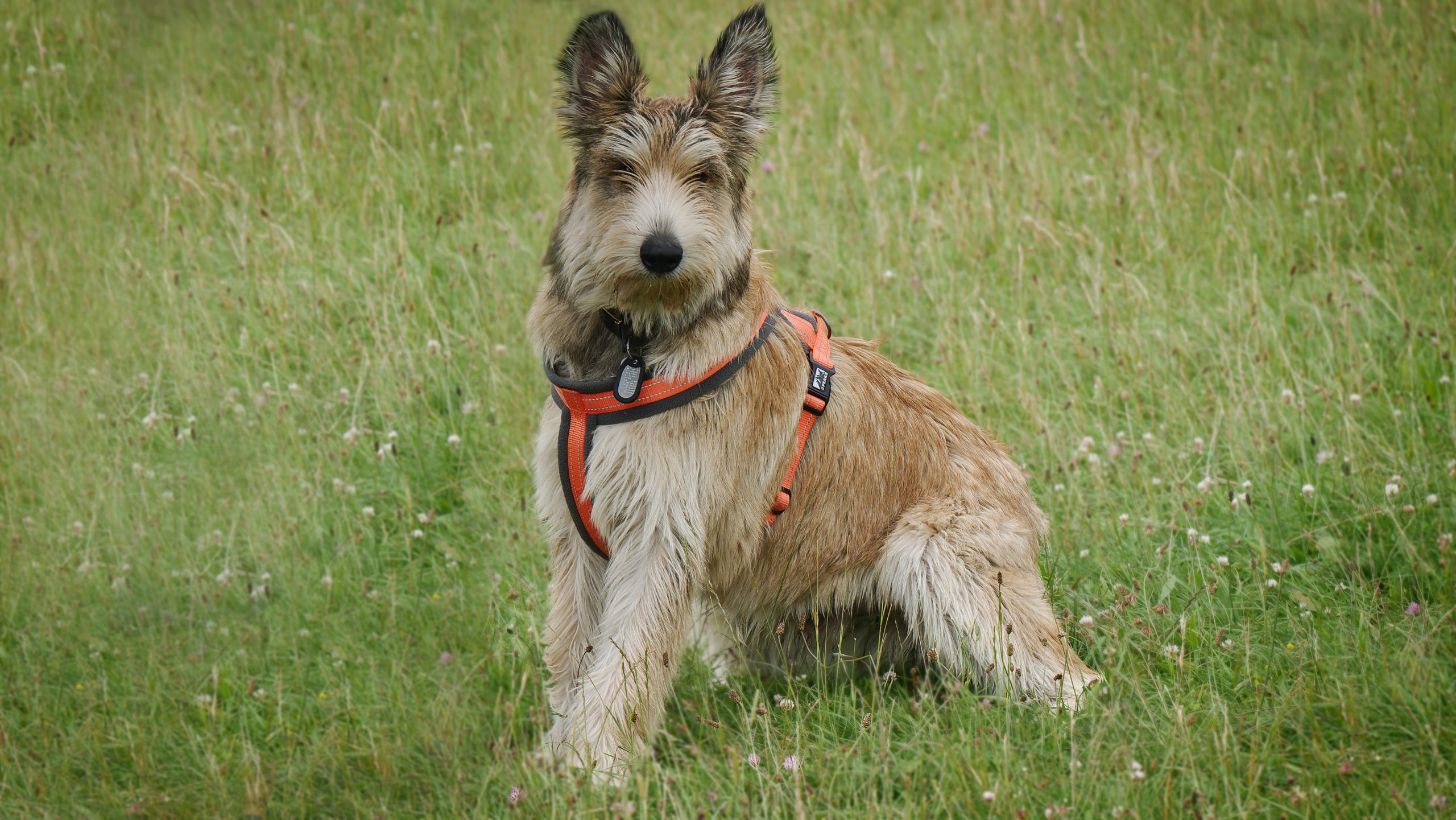The Berger Picard is a lanky herding dog with a robust bone structure and a sturdy frame. Picards have spent decades as self-sufficient problem solvers, thus early socialization and good training are required to deal with their stubborn streak. Berger Picards are easily identified by their prominent ears that stand 4 to 5 inches tall, wavy fawn or brindle coat, and muscular tail that tapers to a unique J-hook. Males can reach a height of 26 inches while females can reach a height of 21 inches. The eyes are dark and gleaming, and the rectangular head is adorned with shaggy brows, a beard, and a mustache, evoking the picture of a wise and worldly Frenchman. Their tough build, agility, and inexhaustible enthusiasm make them willing partners in a variety of sports, games, and outdoor activities. Exercise is essential; prolonged inactivity and neglect will almost certainly lead to destructive behavior in these sensitive, super-smart canines.
Berger Picard
loyal / good-natured / observant
Average sizes and life
expectancy of the breed.
Height
23.5-25.5 inches (male)
21.5-23.5 inches (female)
Weight
50-70 pounds
Life Expectancy
12-13 years
Breed Traits & Characteristics
About the Breed

What To Expect When Caring For a Berger Picard
Owning a dog is not just a privilege; it’s a responsibility. They depend on us for, at minimum, food and shelter, and deserve much more. When you take a dog into your life, you need to understand the commitment that dog ownership entails.
 Health
Health
Berger Picards are a relatively healthy breed. There may be certain health difficulties, like with any breed. Some dogs may suffer certain health issues in their lives, but the vast majority of Berger Picards are healthy.
Recommended Health Tests From the National Breed Club:
- Hip Evaluation
- Ophthalmologist Evaluation
 Grooming
Grooming
The double coat of the Berger Picard is made up of a velvety, dense undercoat for insulation and a shaggy, wiry, waterproof topcoat. During shedding season, combing with a rake and a slicker brush every day or two will remove dead hair before it accumulates on the floor and furnishings. A Picard just has to be brushed once a month the rest of the year. Bathing the breed only on occasion is recommended, and shampoos intended for crisp coats are recommended. The Picard's nails, like those of all breeds, should be cut on a regular basis.
 Exercise
Exercise
The Berger Picard was bred to work in the fields and is lively and athletic, with plenty of stamina and drive. This high-energy breed requires a lot of exercise and mental stimulation on a regular basis. Picard needs a healthy outlet for all of his energy or he will become destructive and miserable. Every day, owners should anticipate to go on at least one long stroll. Picards also enjoy swimming and fetching and make wonderful hiking and biking buddies. A lot of Picards compete in agility, tracking, obedience, Schutzhund (protection), flyball, French ring sport, rally, and herding.
 Training
Training
Early socialization and puppy training sessions are essential for all breeds. Training should begin as soon as possible to avoid the formation of negative habits. Picards are stubborn, but they are also very intelligent and eager to please, so training is usually rather simple. They are more likely to respond to praise and affection than to food, and severe teaching methods are unlikely to work.
 Nutrition
Nutrition
The Berger Picard should thrive on high-quality dog food, whether purchased commercially or produced at home with your veterinarian's supervision and consent. Any diet should be tailored to the age of the dog (puppy, adult, or senior). Berger Picards are athletic, active dogs, so make sure he gets enough excellent food to suit his demands. Some dogs, on the other hand, are prone to becoming overweight, so keep an eye on your dog's calorie consumption and weight level. Treats can be a valuable training aid, but feeding too much can lead to obesity. Discover which human foods are suitable for dogs and which are not. If you have any concerns regarding your dog's weight or diet, consult with your veterinarian. At all times, clean, fresh water should be available.
History


